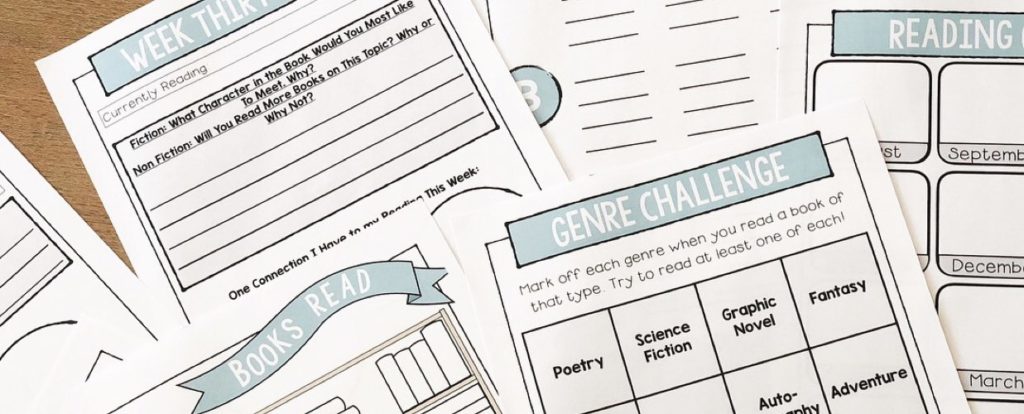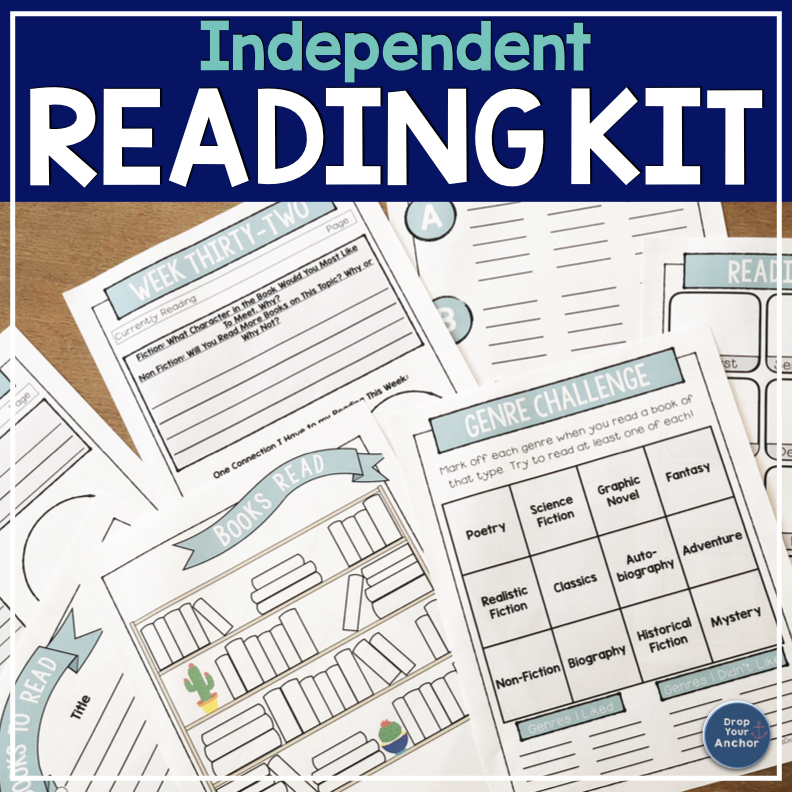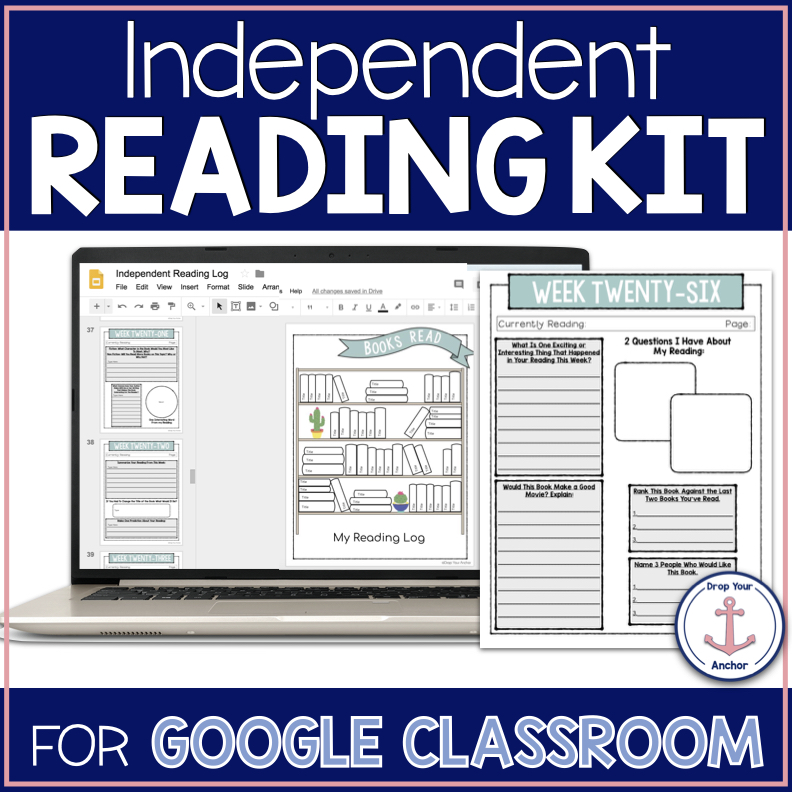Reading logs. Similar to saying, “I’ll wait”, or assigning a back-to-school essay about how students spent their summer, reading logs are a classroom tradition that has been passed down for generations. Listen, I understand the purpose. Teachers with great intentions want to hold their students accountable for their reading. But is there a better way?

Where does the reading log go wrong?
It Makes Reading a Chore.
We teach children to set a purpose for their reading. So we shouldn’t be surprised when reading for enjoyment suddenly turns into reading for work as soon as it’s assigned. A child who would ordinarily pick up a book and read until lights out is suddenly stopping after 20 minutes because that’s all they were told they had to do. For reluctant readers, assigning reading only reinforces the idea that it is something adults force children to do.
It Pressures Students AND Parents to be Dishonest.
This realization is the one that sticks with me the hardest. Sometimes students really don’t have time to get the reading done, sometimes they forget, sometimes they just don’t want to. Life happens.
No matter the reason, we know that often Monday morning would roll around and kids would frantically scribble in made-up reading times, throw the reading log in front of their parents and ask them to sign it. More often than not, parents sign it knowing it’s not true. Even the most wonderful, education championing parents have done it – it’s not worth the battle, they don’t want their children to get in trouble, they’re embarrassed that they weren’t more on top of it – honestly, all reasons I can completely understand.
Getting rid of the signature portion of the reading log felt like a relief for everyone. No one was in a position where they felt they had to be untruthful. Many parents over the years have told me what a relief it was.
The most frequent question I get is often, “Then how do you know if they’re reading at home?” The simple answer is, I don’t. I set expectations, I do all the things that I’ll tell you about below, and at the end of the day, life happens. I’m trying to create lifelong readers and even lifelong readers don’t always get 20 minutes in a night.
What can we do instead?
Encourage Authentic Reading
British educator Margaret Meek said that what “readers read makes all the difference to their view of reading.” We need to give our students access to a variety of books in all different genres. Help students make choices that interest and challenge them. Try as we may, students will judge a book by its cover. Excite them about books in other ways. Try hosting a book tasting where students sample books. Read exciting read alouds and point your students to similar titles. During morning work time read the first chapter of a book and “auction off” the chance to be the first to read it. Let your students know the books that you are reading.
Set Reading Challenges
My students love to challenge themselves. Even without an external incentive, they are happy to try to reach a new goal. Throughout the year we’ll introduce new challenges – read a graphic novel and the original novel it’s based on, try to read books from every genre, read a book and watch the movie, read a non-fiction book that pairs with a historical fiction book, find examples of figurative language as you read, and so many more!
Assign Open-Ended Questions
Open-ended questions are great. They cut back on our work as a teacher and make students truly think. This is a great way to hold students accountable for their reading – we aren’t assigning a certain amount of time, but we are making sure that they are engaged and thinking about anything they do read. After a few years of sending home weekly questions sheets (that can also be filled out as they read during the day), I created my version of the reading log alternative. Once we introduced Google Classroom, I created an electronic version – student’s and parents love it because it can be accessed from anywhere at any time.
You can create your own or see mine here and the digital one here.
Encourage Students to Create & Track Their Reading Goals
What makes setting reading goals effective is that students are the ones who set them. Let them take ownership. Provide them with options to help guide them to the right choices.
Reading Conferences
I love reading conferences. They offer you an opportunity to give personal time to each student. I’ve built relationships with even the most withdrawn child during these interactions. Some reading conferences are more formal and follow a formula:
1. Check in on previous goals
2. Read a few pages together
3. Stop to chat about the book.
4. Set new goals.
I bring a notebook with me to record and take notes. My students keep track of their goals as well. We also have informal conferences where I just plop down next to them as they read, talk to them about their books for a minute or so and move on. Nothing fancy, but it works. Reading conferences set a clear message that we are all in this together.
Provide Opportunities to Read
The most simple strategy can also be the most difficult because of all the pressures put on our time and curriculum in the classroom. I promise you that finding the time for students to read books of their choice pays off. Allow students to get comfortable around the room and just let them go. We can’t control what happens at home or if students will even have an opportunity to read – we CAN control what happens in our classroom.

Free Sample: Reading Recording Sheet
Looking for Books to inspire reading?



Leave a Reply
You must be logged in to post a comment.